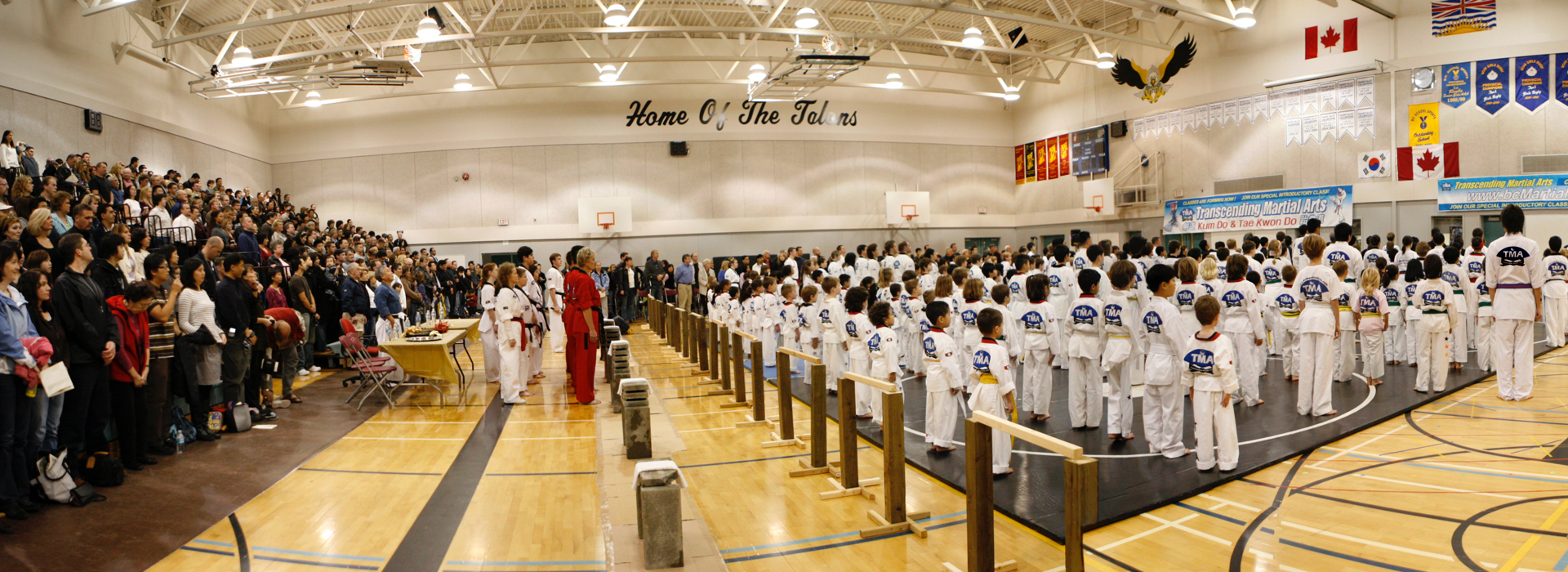TAEKWONDO
Taekwondo can be defined today as the integrated system of techniques executed with maximum power, speed, accuracy, and balance. Taekwondo artists are known to convert their entire potential ability into actual ability, creating body movements unlike any other. The meaning of the three Korean words used in naming taekwondo are 1) tae– the system of techniques involving striking, or kicking with the foot 2) kwon– the system of techniques involving striking, or hitting with the hand and 3) do– the art of experiencing the ultimate being through physical and metaphysical enlightenment.
Evidence of taekwondo has been traced back as far as the year 37 B.C. Around this time, taekwondo was taught only to the Hwrang Do Knights, legendary warriors who were skilled in many of the arts of war, including sword, lance, staff, archery, horsemanship, and hand-to-hand combat. Most evidence today though comes to us from the Koryo dynasty, (918-1392) where taekwondo was practiced as a form of physical fitness, as a sport, and as a martial art.
Modern taekwondo really began just after WWII, when the government of Korea started to resurrect many of the old national treasures and national heritage. After the war, many Korean masters began to move from Korea to other parts of the world, taking taekwondo with them and exposing it to people in other countries. The Korean Taekwondo Federation was formed in 1961, making it’s first modern appearance as a competitive sport two years later.
Today, taekwondo is practiced by more than 30 million students, in over 120 countries around the world. It has become the most popular martial art form in history and is the only martial art recognized by the United Nations and the International Olympic Committee.
KUMDO
Kumdo means “The Way of Sword” or “The Art of Swordplay.” It represents an ancient Korean tradition that originated almost 1,500 years ago when young patriots of good families developed a way to centre their energies to benefit their families, their country, and ultimately, themselves.
The sword is a deadly weapon. It represents death and violence to most of us, but in martial arts it also symbolizes life. Mastery of the sword traditionally symbolizes the removal of the fear of death which carries an exhilarated sense of freedom from the delusions of worldly concerns. Freeing your mind of learned responses and emotions such as fear, anger, and greed allows the body to automate a self-preserving movement without any conscious effort. Kumdo accomplishes perfect synchronization.
Kumdo has quickly gained respect in the west. Some universities even offer kumdo courses as part of their regular curriculum. They have found that within three months, students show a remarkable increase in their ability to develop self-control and to meet challenges with confidence. Kumdo gives us the opportunity to re-centre ourselves to reach that place of mental and physical well-being that most hope to achieve in life.


